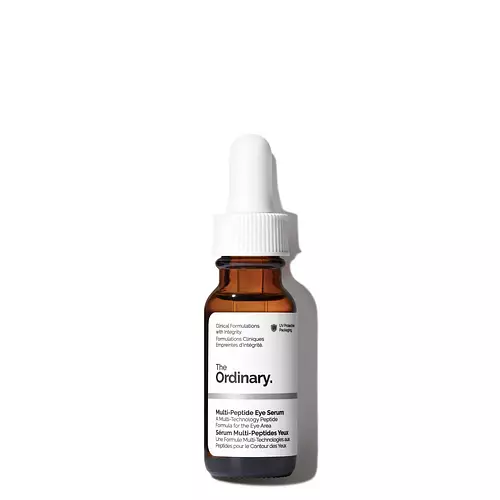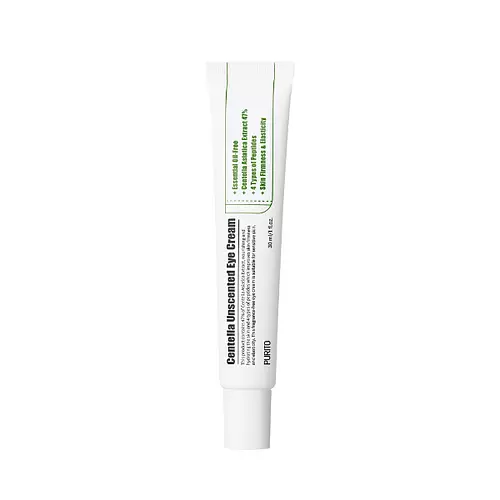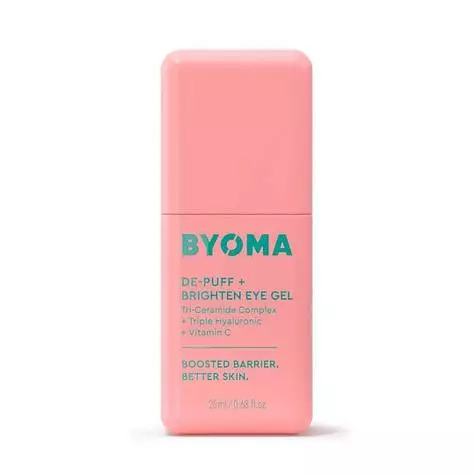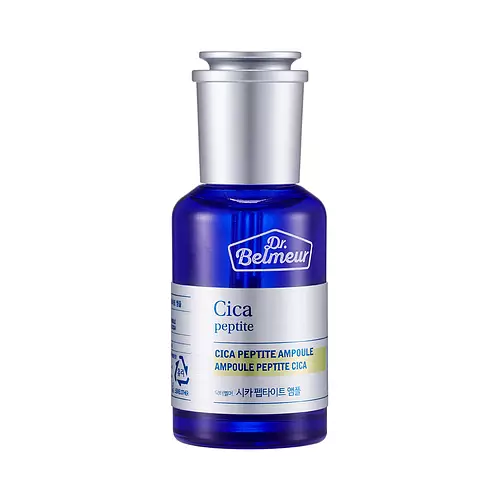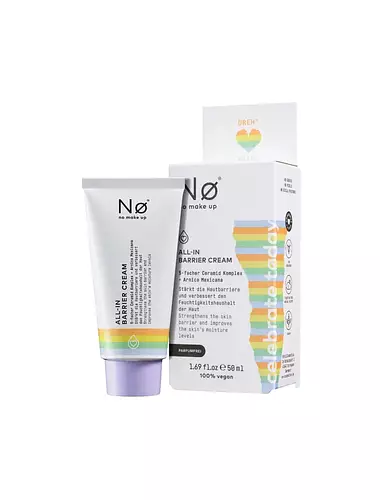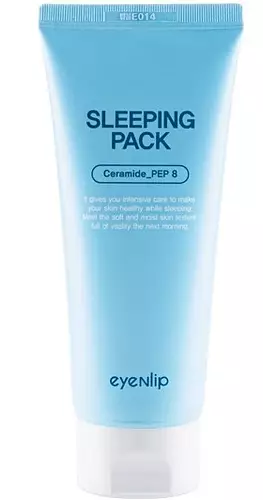The Ordinary Multi-Peptide Eye Serum Versus PURITO Centella Unscented Eye Cream
Updated on June 28, 2024
Overview
What they are
These products are both vegan, cruelty-free, and reef safe eye moisturizers. They have a total of 4 ingredients in common
Cool Features
They both contain peptides
Suited For
They're both likely to be good for fighting acne, anti aging, dry skin, brightening skin, reducing pores and scar healing
Free From
They both do not contain any parabens or sulfates
We independently verify ingredients, and our claims are backed by peer-reviewed research. Spot a product that needs an update? Let us know.
Ingredient Info
The Ordinary Multi-Peptide Eye Serum 34 ingredients
PURITO Centella Unscented Eye Cream 44 ingredients
- Pentaerythrityl Tetraisostearate
- Cetearyl Alcohol
- Cetearyl Olivate
- Sorbitan Olivate
- Palmitic Acid
- Stearic Acid
- Limnanthes Alba Seed Oil
- Argania Spinosa Kernel Oil
- Macadamia Ternifolia Seed Oil
- Butyrospermum Parkii Butter
- Myristic Acid
- Arachidic Acid
- Palmitoyl Tetrapeptide-7
- Palmitoyl Tripeptide-1
- Palmitoyl Hexapeptide-12
At a glance
Click on any of the items below to learn more
The Ordinary Multi-Peptide Eye Serum 34 ingredients
PURITO Centella Unscented Eye Cream 44 ingredients
Notable Ingredients
This product contains 1 ingredient that may have this attribute:
This product contains 1 ingredient that may have this attribute:
This product contains 1 ingredient that may have this attribute:
This product contains 4 ingredients that may have this attribute:
Benefits
This product contains 1 ingredient that may have this attribute:
This product contains 2 ingredients that may have this attribute:
This product contains 1 ingredient that may have this attribute:
This product contains 1 ingredient that may have this attribute:
This product contains 2 ingredients that may have this attribute:
This product contains 1 ingredient that may have this attribute:
This product contains 2 ingredients that may have this attribute:
This product contains 1 ingredient that may have this attribute:
This product contains 1 ingredient that may have this attribute:
This product contains 3 ingredients that may have this attribute:
Concerns
This product contains 1 ingredient that may have this attribute:
This product contains 2 ingredients that may have this attribute:
This product contains 1 ingredient that may have this attribute:
Benefits
This product contains 4 ingredients that may have this attribute:
This product contains 3 ingredients that may have this attribute:
This product contains 5 ingredients that may have this attribute:
This product contains 1 ingredient that may have this attribute:
This product contains 3 ingredients that may have this attribute:
This product contains 1 ingredient that may have this attribute:
This product contains 1 ingredient that may have this attribute:
This product contains 1 ingredient that may have this attribute:
Concerns
This product contains 4 ingredients that may have this attribute:
This product contains 2 ingredients that may have this attribute:
Ingredients Side-by-side
Ingredients Explained
These ingredients are found in both products.
Ingredients higher up in an ingredient list are typically present in a larger amount.
Water. It's the most common cosmetic ingredient of all. You'll usually see it at the top of ingredient lists, meaning that it makes up the largest part of the product.
So why is it so popular? Water most often acts as a solvent - this means that it helps dissolve other ingredients into the formulation.
You'll also recognize water as that liquid we all need to stay alive. If you see this, drink a glass of water. Stay hydrated!
Learn more about WaterGlycerin is already naturally found in your skin. It helps moisturize and protect your skin.
A study from 2016 found glycerin to be more effective as a humectant than AHAs and hyaluronic acid.
As a humectant, it helps the skin stay hydrated by pulling moisture to your skin. The low molecular weight of glycerin allows it to pull moisture into the deeper layers of your skin.
Hydrated skin improves your skin barrier; Your skin barrier helps protect against irritants and bacteria.
Glycerin has also been found to have antimicrobial and antiviral properties. Due to these properties, glycerin is often used in wound and burn treatments.
In cosmetics, glycerin is usually derived from plants such as soybean or palm. However, it can also be sourced from animals, such as tallow or animal fat.
This ingredient is organic, colorless, odorless, and non-toxic.
Glycerin is the name for this ingredient in American English. British English uses Glycerol/Glycerine.
Learn more about GlycerinButylene Glycol (or BG) is used within cosmetic products for a few different reasons:
- It is a solvent, meaning that it helps to dissolve other ingredients. This also enhances the absorption of the product into one's skin.
- It is a humectant, which means that it helps attract moisture into the skin.
- It helps improve product application.
Overall, Butylene Glycol is a safe and well-rounded ingredient. It is unlikely to irritate skin, and works well with pretty much all other ingredients.
Dipropylene Glycol is a synthetically created stabilizer and solvent. It is a part of the glycol class in the alcohol family.
Dipropylene Glycol helps dissolve and evenly distribute ingredients. It also helps decrease viscosity and thin out texture.
As a masking agent, Dipropylene Glycol can be used to cover the smell of other ingredients. However, it does not have a scent.
Studies show Dipropylene Glycol is considered safe to use in skincare.
Learn more about Dipropylene GlycolIngredient Ratings
Here's what our community thinks of the ingredients in these products.
When to use
The Ordinary Multi-Peptide Eye Serum 34 ingredients
PURITO Centella Unscented Eye Cream 44 ingredients


Reviews
Here's what our community thinks
PURITO Centella Unscented Eye Cream 44 ingredients
AnaG
Hydrating and calming. I use it with my reusable eyepatches (I put it in the patches and feeze them for a few minutes) between the patches and the...
Hydrating and calming. I use it with my reusable eyepatches (I put it in the patches and feeze them for a few minutes) between the patches and the cold I manage the undereye bags when I don't sleep enough.
screamadelica
fantastic eye cream
not only is this a great eye cream with excellent ingredients, but it is amazingly inexpensive! costs less than an hour of work...
fantastic eye cream
not only is this a great eye cream with excellent ingredients, but it is amazingly inexpensive! costs less than an hour of work at my job.
